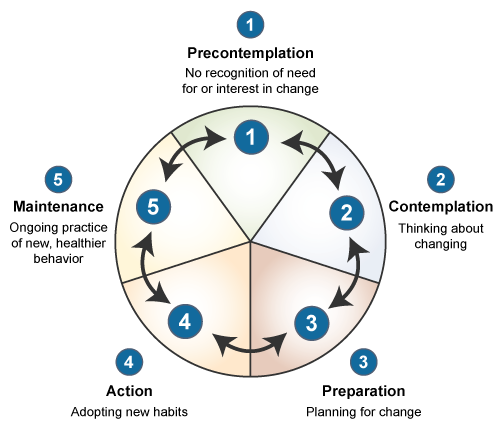When I bring up the need for strong, visible “Calls to Action” on a website, my mission-driven clients often express resistance. They express concerns like: “I don’t want to pressure my visitors into doing something they aren’t ready for.”
You say I need a strong ‘Call to Action’ on my website, but I don’t want to pressure my visitors into doing something they aren’t ready for.
The first time a client brought up this concern, I mistakenly focused my response on the “pressure” part of what she’d said.
“No, no” I assured her, “A Call to Action isn’t ‘pressure’; it’s a road sign. It just helps your site visitors know what to do.”
While the response I gave was true, it didn’t speak to what was really bothering her. She was most concerned about “readiness” — whether or not people viewing her site were ready to take action. My mission-driven clients don’t want to pressure their visitors into doing something they aren’t ready for.
Create meaningful calls to action by considering readiness for change
My clients got me thinking about a “readiness for change” framework I often used as a teacher. Before I switched careers five years ago to become a UX web developer, I taught at an alternative high school for young people who struggled with mental health and addiction. The strength of our work lay in our use of the Stages of Change Model.
Stages of Change shows how people resist, consider, prepare for, and then make actual change in their lives. Now, to be crystal clear, this stages of change model wasn’t developed as a web design or content framework. But it has been widely incorporated by professionals to help people make changes in many aspects of life, like substance use, weight loss, money management, and managing chronic illness. The power of the framework is that it lets us assess if people are ready for what we are offering — and, based on how ready they are, we can determine how strong a “call” we can make.

People who are in “precontemplation” won’t respond to a Call to Action. From their perspective, they don’t need to make a change, and thus won’t be offended by a Call. Those thinking about change (contemplation) will read the Call, but likely mull it over multiple times before making a decision. People who are preparing for or already in action will hear a Call to Action as a welcome whistle, pointing them in the direction they need to go.
So how does this relate to web design, content creation and creating Calls to Action on your mission-driven website? Let’s look at a real-world example.
How To Use the Stages of Change Model When Designing Your Website
Recently I was working with a client who has her own therapy practice. She’d been meaning to make a website for her business for two years, and had started working with me in order to finally make it happen. We’d gone through the process of clarifying her goals, understanding her target users, and learning about best practices for the web. Now she was synthesizing those ideas into a first draft of her content. When I read the first draft she’d written, I immediately noticed she hadn’t included any Calls to Action, aside from having a button in the top navigation where a site visitor could contact her.
When I brought this up to my client, she said “It’s not my job to pressure someone into starting therapy. It’s my job to be here for them when they’re ready.”
What she said is absolutely true. It would not only be unproductive to try to convince someone to do therapy with her, it would also be unethical.
But without a call to action, what was the purpose of her website? So I pulled out the Stages of Change model, so we could dig a little deeper into her assumptions and goals.
Using the Stages of Change, the first thing we noticed about her statement is that it seems to assume visitors to her site are in the precontemplation stage.
I asked my client if this was the case. Was she building her website specifically to target people who are precontemplative about starting therapy?
Are you building a website specifically to target people who are precontemplative?
“No!” she exclaimed immediately. “I mean, I’m happy for precontemplative people to visit my website, but they’re not really my primary audience.”
“Who is your primary audience?” I asked.
“Probably people who are in the preparation stage. People who are thinking about starting therapy. And also people in the action stage. Maybe they had a therapist before but for one reason or another are looking for a different one.”
“Ok,” I said, “Then let’s brainstorm some Calls to Action for people who are in those stages.”
From there she swiftly brainstormed great ideas for Calls to Action. She thought of things like including a “Schedule an Appointment” button not only in the navigation, but also on her front page hero section and her “about me” page. Even more importantly, though, she now feels good about doing it.
Including clear, visible Calls to Action no longer feels like “pressure,” because she recognizes that Calls to Action let people who are ready to say “yes!” to her services actually take the step to contact her.
Using the stages of change model when thinking about Calls to Action isn’t only useful for therapists building their websites. It’s a model for you — so that people who need your help will actually reach out to you and ask for it.
If you’ve been leery of including strong, clear Calls to Action throughout your mission-driven website, I encourage you to think about which stage of change your target audience is in. You might find that including these Calls to Action aren’t “annoying pressure.” They’re helpful road signs that help your target audience achieve their goals — and reach you in the process.
And speaking of including calls to action throughout a website, here’s one to you!
Sometimes it helps to have an expert evaluate your website, or to brainstorm improvement ideas with a professional who excels at asking the right questions and visualizing solutions. If your website would benefit from a professional redesign schedule a free consultation.

This gives me a lot of think about! I love the use of the “Stages of Change Model” in this context. I, too, have struggled with the balance of being available vs. being pushy. Great example with your therapist client. Thank you!